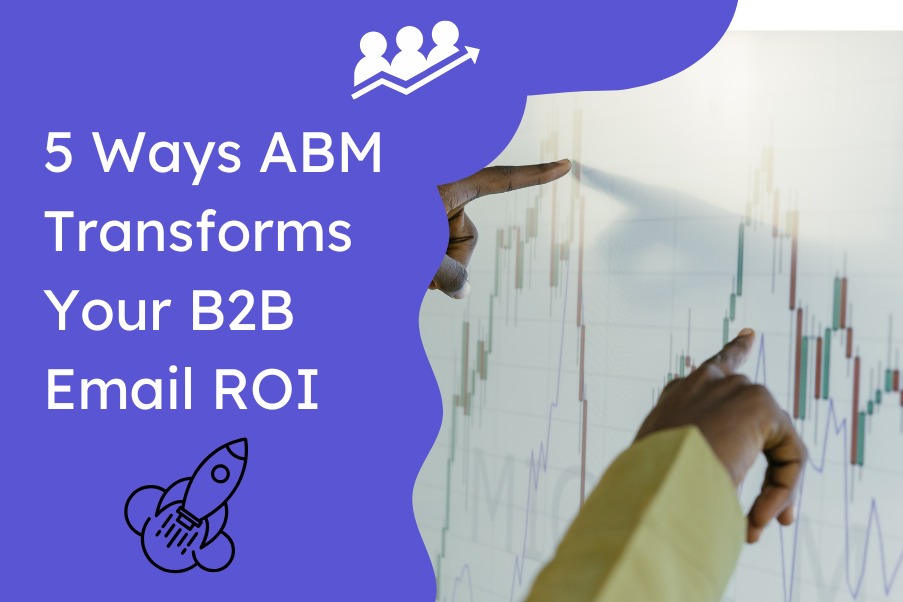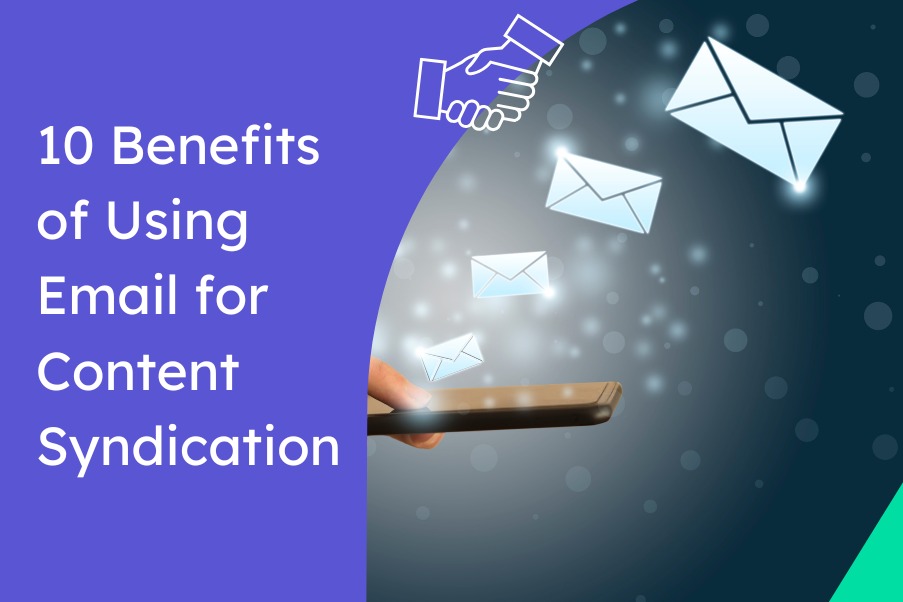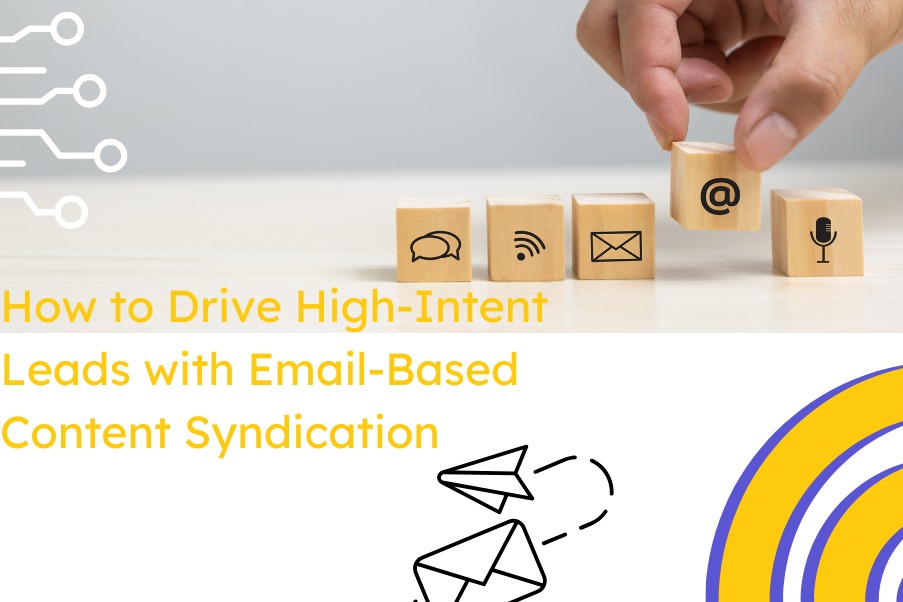Email Marketing Statistics That Will Redefine Your Strategy and Drive Results in 2025
Email marketing is one of the most effective tools for B2B success. It provides a direct way to engage, nurture, and convert leads into loyal customers. When executed properly, it can help to achieve a variety of business goals from increasing brand awareness to driving conversions and improving customer retention. Research says, 31% of marketers actively use email marketing for their businesses. To fully unlock its potential, it’s important to refine your approach with the help of accurate email marketing statistics. By focusing on segmentation, creating personalized content, automating campaigns, and continuously optimizing your efforts, you can elevate your email marketing strategy and achieve measurable results.
This guide will walk you through the key strategies and email marketing statistics that will help you achieve measurable results and elevate your B2B email marketing to new heights.
Redefining Your Email Marketing Strategy With Key Email Marketing Statistics
Redefining your email marketing strategy with key email marketing statistics will help you to make data-driven decisions. By understanding trends, engagement metrics, and customer preferences, you can optimize campaigns for better targeting and higher conversions. These email marketing statistics will provide you valuable insights that will shape your approach towards email marketing, ensuring tha it aligns with your business goals.
Define Your Goals
To succeed in email marketing, it’s crucial to define clear business objectives. Start by focusing on your brand awareness. With 60% of consumers preferring email communication, sending newsletters, industry insights, and updates. This helps to keep your brand top-of-mind. For lead nurturing, automated drip email marketing campaigns are highly effective. It generates 50% more sales-ready leads at a 33% lower cost. This highlights the power of a targeted nurturing strategy. When it comes to sales and conversions, email marketing consistently delivers an average conversion rate of 2%-5%, with a strong ROI of $36-$40 for every $1 spent. Lastly, email marketing plays a key role in customer retention, as 59% of consumers say marketing emails influence their purchase decisions. By aligning your strategy with these insights, you can unlock significant benefits across all key business areas. To understand what is the most effective email marketing campaign strategy, consider these goals and implement email marketing campaign best practices to guide define your efforts.
Segment Your Audience
Segmenting your audience is essential for optimizing your email marketing campaign types. Building your list through lead magnets like ebooks, discounts, and free trials is an effective way to grow your audience. Segmenting your list based on demographics, location, engagement, and purchase behavior helps to create more personalized and relevant content. According to DMA, 25% of revenue comes from segmented lists, with targeted emails driving 30% of revenue. In fact, marketers who implement segmentation see a 760% increase in revenue from their campaigns. By refining your segmentation, you can foster stronger customer relationships and boost conversions. A template for email marketing campaign can also help you to streamline this process and ensure consistency across your audience segments.
Create Engaging Content
Engaging content is at the heart of a successful email marketing campaign. Personalization is key as 77% of marketers report that tailoring content to their audience helps them to drive better engagement. In addition, including visually appealing elements like images and videos can significantly enhance your emails. Sales teams that use videos in their email marketing see a 16% higher open rate and a 26% increase in replies. Segmenting your content to match each audience’s preferences and pain points ensures relevance and boosts interaction. Furthermore, adding interactive features like polls and surveys will also deepen your engagement and would increase open and click-through rates, ultimately driving conversions.
Automation
Email marketing campaign automation is a game-changer for B2B email marketing. Welcome emails a part of the automation process boasts an impressive 91.43% open rate. It offers a prime opportunity to introduce your business to new subscribers and set the tone for a lasting relationship. Abandoned cart emails, customized for B2B customers also helps to recover the lost sales by reminding prospects about their unfinished purchases or trials. Re-engagement emails are equally important, as 45% of recipients who engage with these emails go on to interact with future content. Drip email marketing campaigns continues to be vital in nurturing leads, offering valuable content over time to build trust and guide prospects through the sales funnel. Automated emails drives 320% more revenue than non-automated ones so integrating automation definitely enhances both customer acquisition and retention. For email marketing campaign services, you can rely on platforms offering automation tools and features to streamline these processes.
Optimize & Test
To get the most out of your email marketing campaigns, constant optimization and testing are crucial. A/B testing is used by 58% of companies to identify the best-performing subject lines and content, which helps to ensure that your emails resonate with your audience. Testing different send times also proves beneficial, ensuring your emails to land in inboxes when recipients are most likely to engage. With 26-78% of emails opened on mobile devices, optimizing for mobile is no longer optional instead it’s essential for maintaining high engagement. By continuously refining your campaigns through testing and optimization, you can throughly boost open rates, click-through rates, and ultimately conversions.
Track, Analyze & Improve
Tracking and analyzing key metrics is crucial for continuously refining your email marketing campaign strategy. Monitoring open rates, which is an average of 15.14% in B2B email marketing, helps to assess the effectiveness of your subject lines. Click-through rates which is around 3.18% in B2B email marketing shows how well your content resonates with recipients. The conversion rate, almost 2.5% for B2B tech campaigns indicates how successful your emails are driving desired actions. Tracking down unsubscribe rates which is around 0.1%, provides insights into audience engagement and content relevance. By consistently reviewing these metrics and making data-driven adjustments, you can enhance engagement, increase conversions, and achieve long-term success. You can use email marketing campaign analytics to track these metrics and adjust accordingly for greater effectiveness.
Incorporating these email marketing statistics into your strategy will undoubtedly elevate your B2B email marketing strategies and drive significant results. By setting clear goals, segmenting your audience, creating engaging and personalized content, and continuously testing and optimizing your campaigns, you’ll foster stronger connections with your audience, improve engagement, and boost conversions. As email marketing continues to evolve, staying agile and data-driven will ensure your business remains ahead of the curve. The email marketing campaign strategy and best email marketing campaign practices are discussed here offer a roadmap to success. This empowers you to leverage the full potential of email marketing and achieve sustainable growth in your business. With the right approach, you can also explore email marketing campaign platforms and email marketing campaign services that align with your needs, making the process more efficient and effective.
Ready to boost your email marketing results? Let PMGB2B guide you with tailored strategies for success in 2025. Contact us today!
FAQ
1. What is the most effective email marketing campaign strategy?
The most effective email marketing campaign strategy focuses on segmentation, personalization, automation, and continuous optimization. By segmenting your audience based on demographics, behavior, and engagement, you can send relevant content. Personalizing emails to cater to individual preferences boosts engagement, while automating campaigns allows for timely follow-ups. Regularly testing and optimizing campaigns ensures high performance and better ROI.
2. What is an email marketing campaign?
An email marketing campaign is a targeted set of emails designed to achieve specific business objectives, such as driving sales, increasing brand awareness, or nurturing leads. These campaigns are sent to a list of subscribers, and typically include newsletters, promotional offers, product updates, or personalized content to engage recipients and drive desired actions.
3. How do I create an email marketing campaign?
To create an email marketing campaign, start by defining your goals and target audience. Choose an email marketing platform to manage your campaigns, then design your email content, ensuring it is visually appealing and relevant. Craft a compelling subject line, personalize the email where possible, and schedule the campaign. Finally, track performance metrics like open rates, click-through rates, and conversions to refine future campaigns.
4. How do I set up an email marketing campaign?
Setting up an email marketing campaign involves several key steps:
- Choose an email marketing platform: Select one that fits your needs
- Build your email list: Collect emails from subscribers who have opted in.
- Design the email: Use templates or create custom designs that align with your brand.
- Write compelling subject lines: Make them attention-grabbing to increase open rates.
- Automate and segment: Set up triggers for automated workflows and segment the list for personalized emails.
- Test and track: Run tests to optimize the email’s performance and analyze results to improve future campaigns.
5. What are the best practices for email marketing campaigns?
Some of the best practices for email marketing campaigns include:
- Personalize your content: Tailor emails based on recipient data for higher engagement.
- Segment your audience: Target specific groups with relevant content to increase conversions.
- Test and optimize: Use A/B testing to experiment with subject lines, design, and CTAs.
- Optimize for mobile: Ensure your emails are mobile-friendly, as a large portion of users access them via mobile devices.
- Monitor metrics: Track open rates, click-through rates, and conversions to evaluate campaign performance and make improvements.





